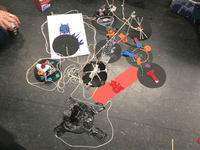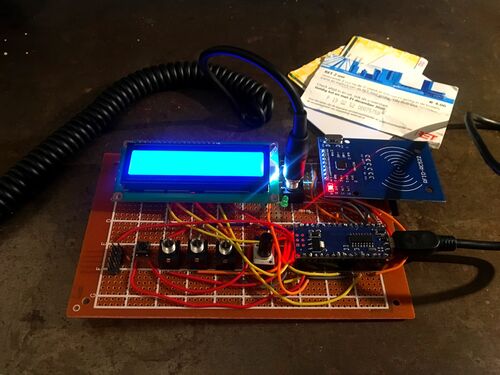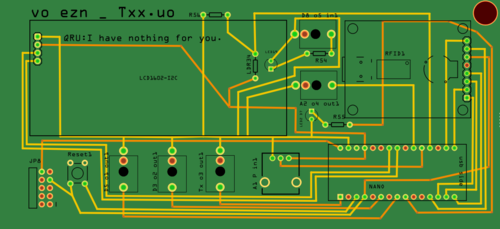User:E.zn/special issue X: Difference between revisions
No edit summary |
No edit summary |
||
| Line 30: | Line 30: | ||
==References by Aymeric== | |||
The Thinking Machine [1961]<br> | |||
Mark Weiser and John Seely Brown - Designing Calm Technology [1995]<br> | |||
Bruno Latour - The Third Meaning of Technical Mediation [small extract from Pandora's Hope 1999]<br> | |||
Lucent Technologies - Bell Labs Innovation Song [2000]<br> | |||
AT&T - Microworld with William Shatner [1976]<br> | |||
Friedrich Kittler - There is no Software [1995]<br> | |||
Ken Thompson - Reflections on Trusting Trust [1984]<br> | |||
Douglas Adams - Hyperland [1990]<br> | |||
Langdon Winner - Do artefacts have politics [1980]<br> | |||
Tim and Eric Awesome Show, Great Job! - Cinco Midi Organiser [2009]<br> | |||
Femke Snelting and Jara Rocha - MakeHuman [2018]<br> | |||
Robin James - Spotify Teardown: Inside the Black Box of Streaming Music<br> | |||
Revision as of 04:49, 2 December 2019
Collaboration, Conflict & Consent
A two-day workshop with Eleanor Greenhalgh
_ Applying various methods of decision-making and evaluating the outcomes.
_ Practicing listening in teams of three [each having a specific role].
_ Playing group games, like counting to 20.
_ Creating a consensual artwork.
Module
Building a module with a guest tutor Dennis de Bel
Txx.uo manual [draft]
Txx.uo consolidates two contrasting radio frequency implementation modes: RFID reader scans the cards/objects with RFID tags using radio waves and LCD screen displays a Q-code* [internationally established three-letter abbreviation used in radio communication].
*A particular Q-code denotes a question when it is followed by a question mark and references an answer [statement] when it's not:
QRU? : Have you anything for me?
QRU : I have nothing for you.
The RFID technology is used for object identification, authentication and security reasons, whereas Q-code is transmitted on a specific radio frequency by a radio operator and can be intercepted by anyone, who is tuned in to the same frequency.
This module converts the data of a scanned card into a sound and binary code. The latter makes the LED blink and sends the corresponding signal to another module through an output channel. Top row of an LCD screen displays a specific question from the list of a Q-code, depending on a knob position and if the module is receiving a signal via the input jack, a random answer is shown on the second raw of the screen.
References by Aymeric
The Thinking Machine [1961]
Mark Weiser and John Seely Brown - Designing Calm Technology [1995]
Bruno Latour - The Third Meaning of Technical Mediation [small extract from Pandora's Hope 1999]
Lucent Technologies - Bell Labs Innovation Song [2000]
AT&T - Microworld with William Shatner [1976]
Friedrich Kittler - There is no Software [1995]
Ken Thompson - Reflections on Trusting Trust [1984]
Douglas Adams - Hyperland [1990]
Langdon Winner - Do artefacts have politics [1980]
Tim and Eric Awesome Show, Great Job! - Cinco Midi Organiser [2009]
Femke Snelting and Jara Rocha - MakeHuman [2018]
Robin James - Spotify Teardown: Inside the Black Box of Streaming Music



